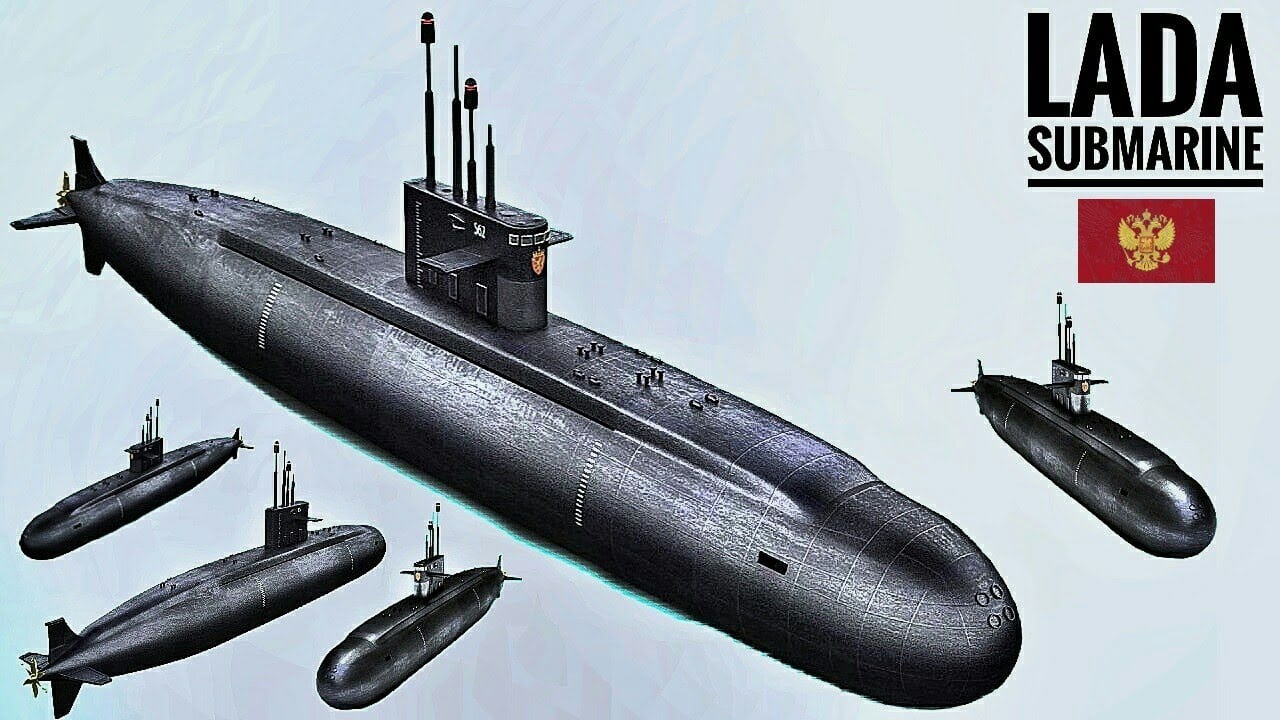Has Russia Pulled the Plug on its Lada-class Diesel-Electric Submarines? – Last October, there were reports that the first serial diesel-electric attack submarine Project 677 Lada-class (NATO reporting name “St. Petersburg”), which was developed by the Admiralty Shipyard, would be handed over to the Russian Navy by the end of this year. The diesel-electric submarines were developed as a highly improved version of the Project 636 boats, but with better acoustic signature, new combat systems, and possibly air-independent propulsion.
“The first serial Project 677 Lada submarine is planned to be received in 2022,” a source in the shipyard told Russian state media, but there was no official confirmation.
Serial Production Moving Forward?
Construction of the Kronshtadt (B-586), which had been laid down in 2005, had been halted after issues were found with Project 677’s lead submarine prototype. That required significant redesign and construction on the boat only resumed in 2013. B-586 was finally launched last year and began sea trials in December.
Currently, the Admiralty Shipyard is also building one more Lada-class submarine, the future Velikiye Luki, while the first steel was cut for the next two boats with a third also on order. Originally a full dozen of the diesel-electric boats were ordered, but given the issues with the program, it is unclear if that order has been pulled.
Slow Boat Development
Sankt Petersburg (B-585), the lead submarine of the project, was launched in late 2004 and commissioned in 2010. However, she was not accepted by the Russian Navy as it was discovered there were issues with the boat’s propulsion and that its sonar systems did not meet Russian specifications. Construction on the remaining boats of Project 677 was thus frozen.
The issues with the lead submarine were addressed, and after several years serving as a “test platform,” she was formally accepted into service with the Russian Navy last year. Sankt Petersburg officially joined the Northern Fleet in September 2021.
The delays in the program were just one of several issues that the Russian Navy has faced in recent years.
Project 677 Lada-class submarines are often referred to as the fourth generation of diesel-electric subs. The boats have a surface displacement of about 1,750 tonnes and can develop an underwater speed of up to 21 knots, and an endurance of 45 days. The Lada-class subs are reportedly armed with Kalibr cruise missile systems and have a crew of 35 including officers and sailors. The boats can be deployed in anti-submarine warfare (ASW) and anti-surface warfare (AsuW) operations, protection of naval bases, reconnaissance and patrol missions.
Export Model – Dead in the Water?
Russia also developed an export variant of the Lada-class: the Project 1650 Amur-class (named for the Amur River), which was designed for markets including India and China, while Morocco has also been offered one. The export submarine could be offered in various configurations with a displacement of 550 to 1,850 tonnes and be equipped with a variety of weapon systems.
To date, there have been no buyers for the submarines, and given the sanctions placed on Russia, following its unprovoked invasion of Ukraine, the Amur-class could be dead in the water.
Now a Senior Editor for 1945, Peter Suciu is a Michigan-based writer who has contributed to more than four dozen magazines, newspapers and websites. He regularly writes about military hardware, and is the author of several books on military headgear including A Gallery of Military Headdress, which is available on Amazon.com. Peter is also a Contributing Writer for Forbes.

